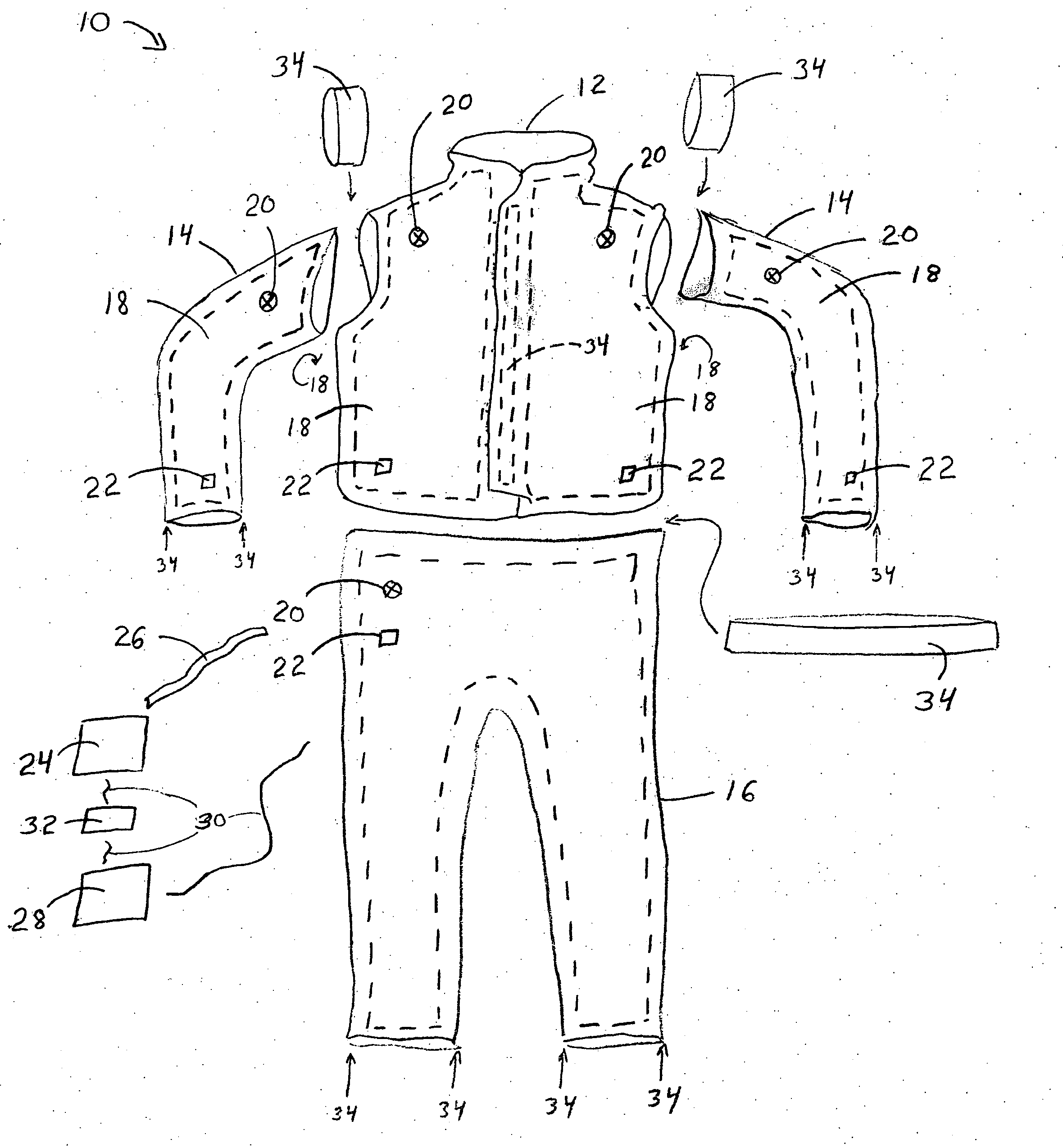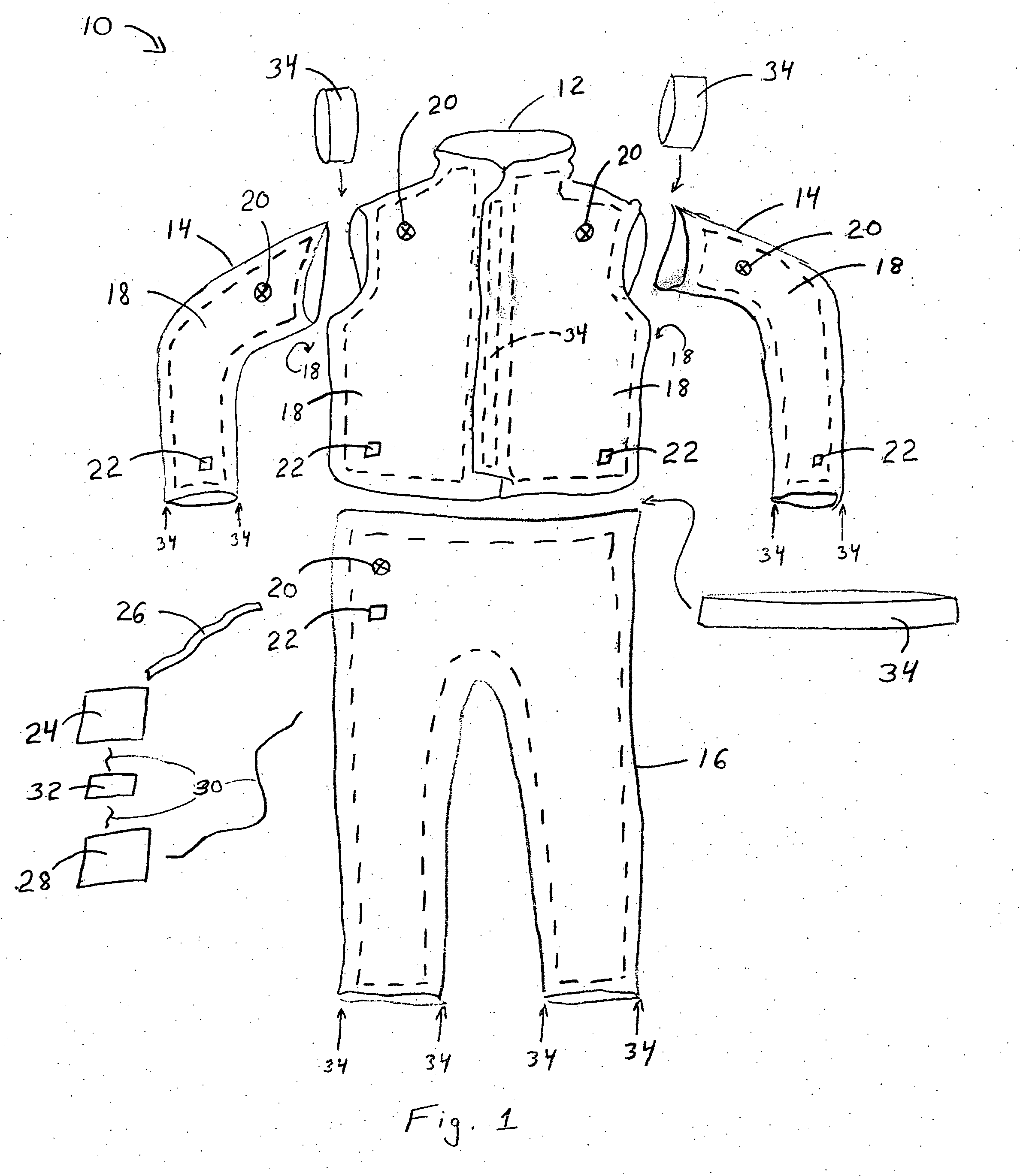Garment-integrated proprioceptive feedback system
a feedback system and garment technology, applied in the field of garments, can solve the problems of social interaction difficulties, inability to allow such children and adults to become symptom-free or disorder-free, and even greater challenges in family and institutional settings
- Summary
- Abstract
- Description
- Claims
- Application Information
AI Technical Summary
Benefits of technology
Problems solved by technology
Method used
Image
Examples
Embodiment Construction
[0016]The present invention generally relates to a flexible, detachable, pressure-providing garment that can be worn by a subject in order to provide to the subject sensory and body awareness. The present invention In particular the present invention provides a garment for use in a method of providing sensory input and body awareness to a person suffering from a neurological disorder characterized by impaired motor control, autism, proprioceptive deficits, deep-sensory deficits, or hypersensitivity. In the method, a garment as described herein is worn by the afflicted person. The garment allows for freedom of movement and provides sensory input through inflatable bladders / pressure devices integrated into the garment, however, the garment is such that each of its portions are separately detachable. The garment may be a wearable article such as a shirt, pants, unitard, glove, stocking, hood, torso wrap, compression sleeve, or compression band as long as the separate portions thereof a...
PUM
 Login to View More
Login to View More Abstract
Description
Claims
Application Information
 Login to View More
Login to View More - R&D
- Intellectual Property
- Life Sciences
- Materials
- Tech Scout
- Unparalleled Data Quality
- Higher Quality Content
- 60% Fewer Hallucinations
Browse by: Latest US Patents, China's latest patents, Technical Efficacy Thesaurus, Application Domain, Technology Topic, Popular Technical Reports.
© 2025 PatSnap. All rights reserved.Legal|Privacy policy|Modern Slavery Act Transparency Statement|Sitemap|About US| Contact US: help@patsnap.com


